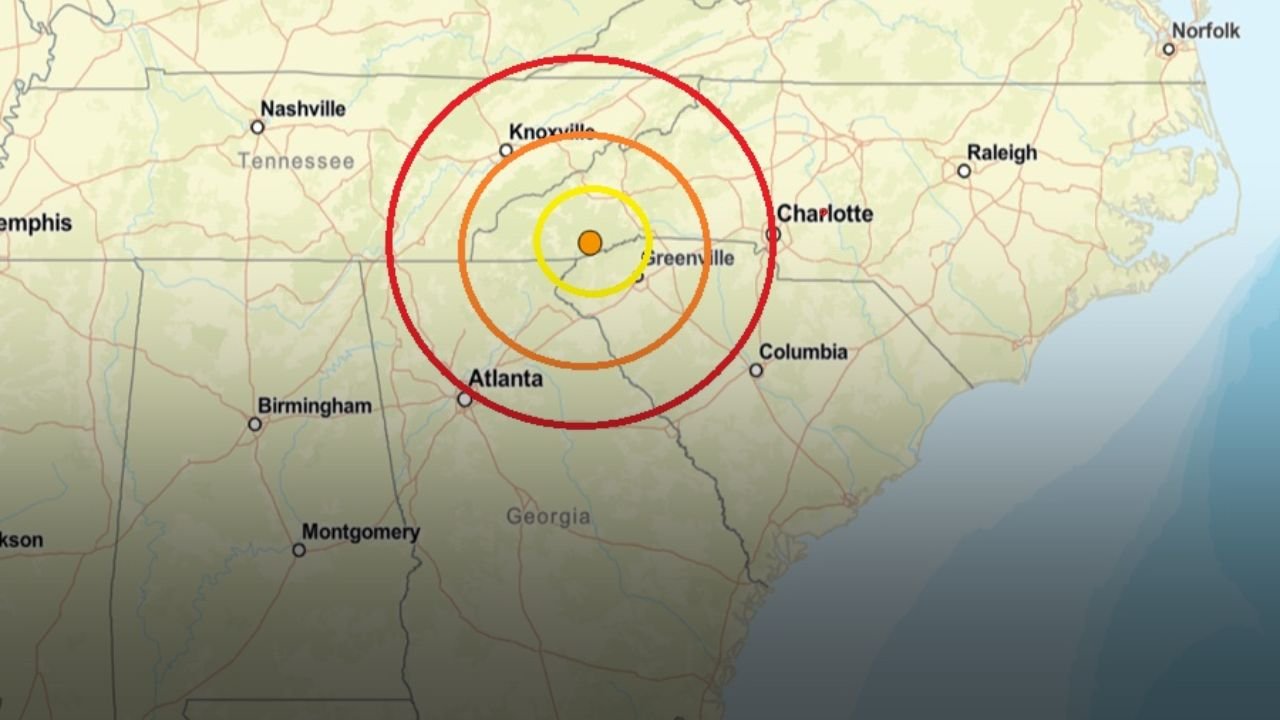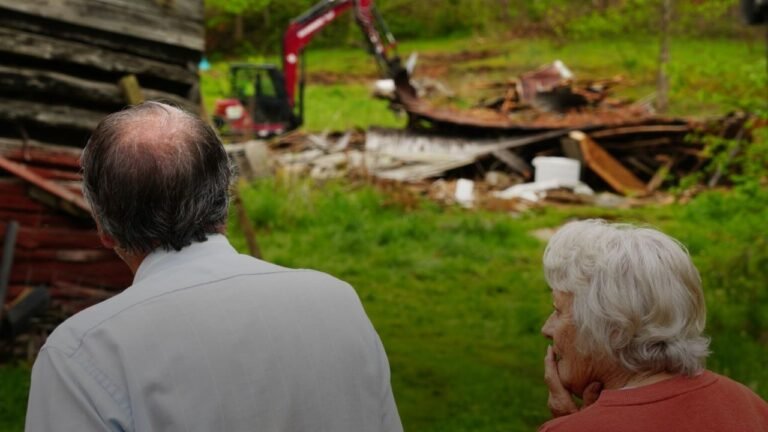Small Earthquake Strikes Western North Carolina Near Georgia and South Carolina Border
NORTH CAROLINA — Early Tuesday morning, a magnitude 1.3 earthquake struck near the North Carolina-Georgia-South Carolina border, the latest in a string of minor tremors to hit the region in recent weeks. The event occurred at 4:41 a.m. on July 23, at a depth of 1.9 kilometers, according to data from the U.S. Geological Survey (USGS).
The quake was centered near Wold Ridge, in the mountainous region located between Charlotte and Chattanooga, and roughly between Asheville, NC, and Gainesville, GA. No injuries or damage were reported.
Part of a Series of Small Earthquakes in the Region
This week’s tremor follows another event — a magnitude 2.2 earthquake on July 11 — in the same general area. While these events are weak, experts say they are part of a pattern of minor but persistent seismic activity in the southern Appalachian region.
The USGS classifies earthquakes under 2.0 as microearthquakes, which are rarely felt by people and almost never cause damage. However, once a quake reaches 3.0 or higher, it can be felt more widely, and at 5.5 or above, property damage becomes more likely.
Why Do Earthquakes Happen in North Carolina?
While earthquakes are often associated with tectonic boundaries like California’s San Andreas Fault, North Carolina is far from any active plate boundary. However, the state still experiences intraplate earthquakes, often caused by movement along ancient fault lines buried deep beneath the Appalachian Mountains.
According to the North Carolina Geological Survey, western North Carolina is the state’s most seismically active region, although most quakes are under 3.0 in magnitude and pose little threat.
Historical records show that earthquakes are not unheard of in the state. The most significant event in recent memory occurred in August 2020, when a 5.1-magnitude earthquake struck near Sparta, NC, causing light structural damage and being felt across several southeastern states.
Understanding the Seismic Risk
According to the Federal Emergency Management Agency (FEMA), while major earthquakes are rare in the southeastern U.S., preparedness is still important — especially for vulnerable structures.
USGS reports show that the Appalachian Mountains are home to numerous old fault lines, and small to moderate earthquakes can occur without warning. These faults are not well understood due to their buried and eroded nature, making predictive modeling difficult.
A 2021 report by the United States Nuclear Regulatory Commission (NRC) also highlighted that parts of North Carolina and South Carolina lie in zones of moderate seismic hazard, particularly near the Blue Ridge and Piedmont areas.
What Should Residents Do After a Quake?
Although this week’s quake caused no reported effects, experts recommend that residents:
- Check for structural damage, especially in older homes
- Report unusual damage or ground cracks to local emergency management
- Familiarize themselves with “Drop, Cover, and Hold On” protocols recommended by Ready.gov
Most importantly, experts stress that awareness and preparation are key — even in regions not known for major quakes.
Have you ever experienced a tremor in North Carolina or the tri-state border area? Share your story or preparedness tips at SaludaStandard-Sentinel.com.







